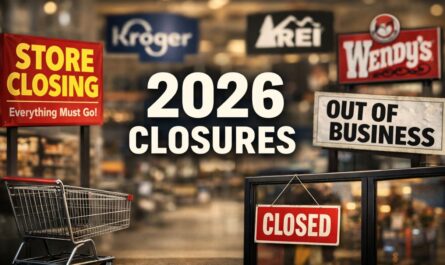In 2025, student loan forgiveness programs will continue to provide much-needed relief to millions of borrowers struggling with the burden of educational debt. With student loans being one of the largest sources of financial stress for many, these programs provide a way to alleviate the burden. However, the landscape of student loan forgiveness has evolved, and it’s crucial to understand which programs are available, who qualifies, and how to navigate them.
These forgiveness programs primarily target federal student loans, leaving private loans outside their scope. This means that if you have loans with private lenders, you will, unfortunately, be unable to take advantage of federal forgiveness opportunities. However, for borrowers with federal loans, several key programs are available that can significantly reduce or eliminate their student debt.
Public Service Loan Forgiveness (PSLF)
The Public Service Loan Forgiveness (PSLF) program is one of the most prominent and long-standing federal student loan forgiveness options available. PSLF is specifically designed for individuals working in public service jobs. This includes government employees and workers in qualifying nonprofit organizations.
The PSLF program offers borrowers the opportunity to have their remaining loan balance forgiven after making 120 qualifying monthly payments, which equates to approximately 10 years of consistent payments. To be eligible, borrowers must work full-time in a public service job while making qualifying payments under a Direct Loan or Direct Consolidation Loan. The great thing about PSLF is that there’s no tax liability on the amount forgiven, unlike some other programs where the forgiven loan balance is treated as taxable income.
For those in public service roles, PSLF remains one of the most powerful options to clear your federal student loans. However, it’s crucial to ensure your employment is verified by the Department of Education (ED) and that you’re on the right repayment plan, such as an Income-Driven Repayment (IDR) plan.
Income-Driven Repayment (IDR) Plans
Income-Driven Repayment (IDR) plans are another avenue for loan forgiveness. Under these plans, your monthly payments are calculated based on your income and family size, which can significantly lower your payments compared to standard repayment plans. There are several different types of IDR plans, each with its own criteria:
- PAYE (Pay As You Earn)
- IBR (Income-Based Repayment)
- ICR (Income-Contingent Repayment)
- SAVE (Saving on a Valuable Education)
These plans are ideal for borrowers who have limited income or high family responsibilities, as the goal is to make the loans more manageable. Some borrowers may qualify for monthly payments as low as $0. However, while your costs are lower, the loan balance can continue to accrue interest, which could increase the total amount you owe.

Under the IDR forgiveness structure, after 20 to 25 years of qualifying payments, any remaining loan balance is forgiven. The forgiven amount is typically not taxable. As you can imagine, this is an excellent option for borrowers who have a high loan balance relative to their income.
Teacher Loan Forgiveness (TLF)
Educators who work in low-income schools can take advantage of the Teacher Loan Forgiveness (TLF) program. This program offers forgiveness of federal loans ranging from $5,000 to $17,500, depending on the subject area taught and the number of years worked in an eligible school.
To qualify for TLF, educators must serve full-time in a low-income school for five consecutive years. However, TLF benefits cannot be combined with PSLF, so educators who are eligible for both programs must choose which one to pursue. It’s important to carefully assess which program would benefit you the most before committing.
Federal Disability and Military Forgiveness Programs
Several other federal loan forgiveness programs cater to specific groups, including military personnel and individuals with disabilities.
- Total and Permanent Disability Discharge (TPD): Borrowers who are totally and permanently disabled can have their loans discharged through this program. The discharge is typically granted if a physician certifies the borrower’s disability, and the Department of Education confirms it.
- Military Loan Forgiveness: Active-duty service members, veterans, and certain members of the National Guard and Reserve may qualify for loan forgiveness programs. These programs can offer 100% loan cancellation in some cases, especially for those who serve in combat or are injured in the line of duty. Each branch of the military may offer specific loan forgiveness benefits, so it’s important to check with your service branch for more information.
Perkins Loan Cancellation
Borrowers with Perkins Loans may be eligible for cancellation based on the type of service they provide. For instance, teachers, healthcare professionals, and those working in law enforcement or childcare may qualify for loan cancellation in exchange for a specific amount of service time in their respective fields. Perkins Loan cancellation is not the same as forgiveness, but it still offers a way to reduce your debt by fulfilling certain service obligations.
State-Specific Forgiveness Programs
In addition to federal programs, state-specific student loan forgiveness programs are available. These programs vary by state and are typically designed to address specific workforce needs in areas such as healthcare, education, and law enforcement.
For example, Massachusetts offers a loan repayment program for healthcare workers who agree to work in areas of high need. These state-level programs often target professionals in industries experiencing a workforce shortage and may offer incentives to encourage individuals to take jobs in underserved areas.
Borrowers should keep an eye on regional opportunities, as states frequently update or introduce new programs in response to their current economic needs.
Key Considerations for Borrowers
While student loan forgiveness programs in 2025 are still robust, there are a few key things to remember:
- Stay Informed: Federal and state programs are subject to change over time. Laws and eligibility requirements are subject to reform, so staying up-to-date with changes is crucial.
- Track Your Payments: Many forgiveness programs require a minimum number of qualifying payments. Ensure that you keep accurate records and regularly check your progress with your loan servicer.
- Understand the Tax Implications: While many forgiveness programs are not taxable, some programs may result in taxable income. Be aware of the tax implications of forgiveness and plan accordingly.
- Check Eligibility for Multiple Programs: In some cases, borrowers may qualify for more than one forgiveness program, but they must choose the one that will benefit them the most.
Final Thoughts
Student loan forgiveness programs remain a valuable tool for many in 2025. Whether you’re working in public service, teaching, or struggling with income-based payments, there are options available that can help reduce your debt over time. By carefully evaluating your situation, staying informed about new opportunities, and planning strategically, you can find the most effective way to achieve student loan forgiveness and ultimately take control of your financial future.
Disclaimer: This article has been meticulously fact-checked by our team to ensure accuracy and uphold transparency. We strive to deliver trustworthy and dependable content to our readers.




